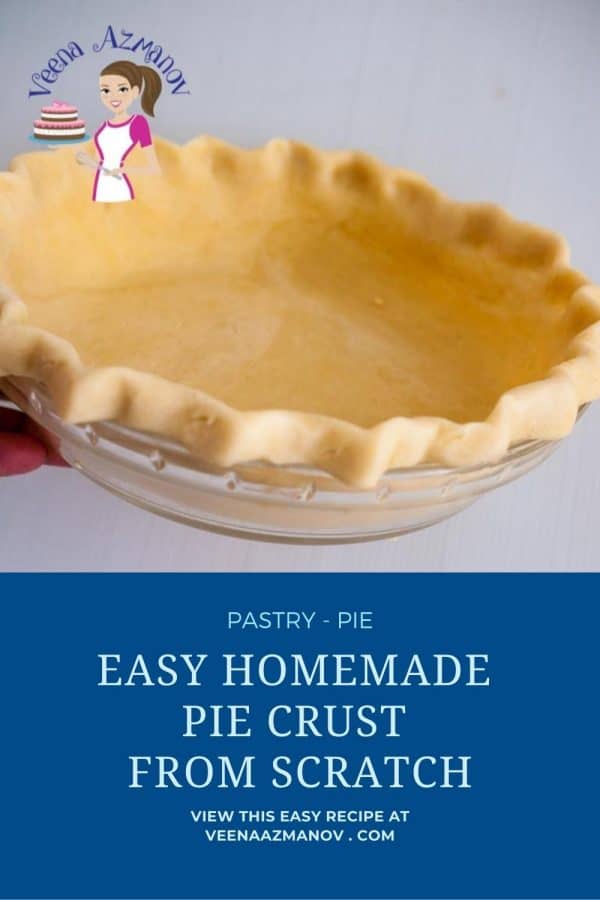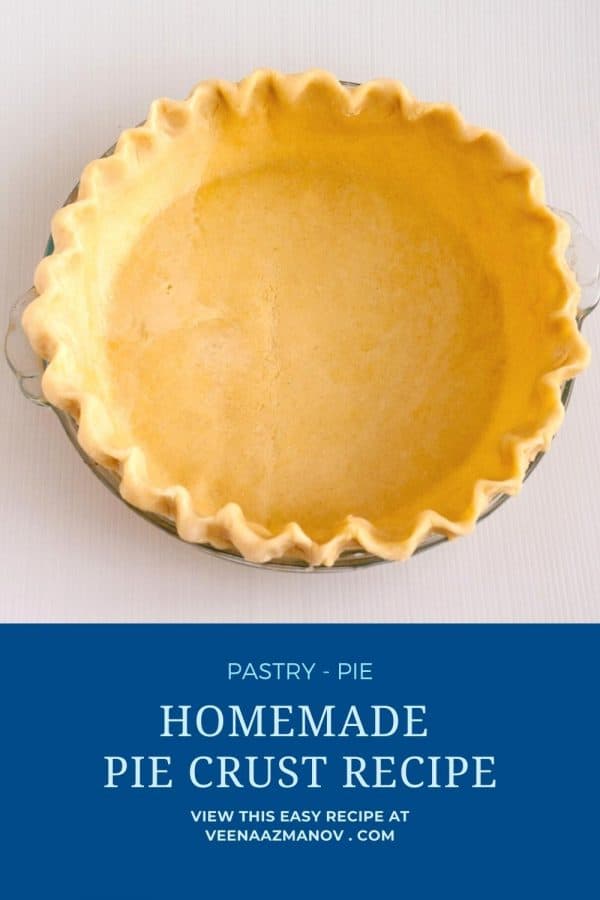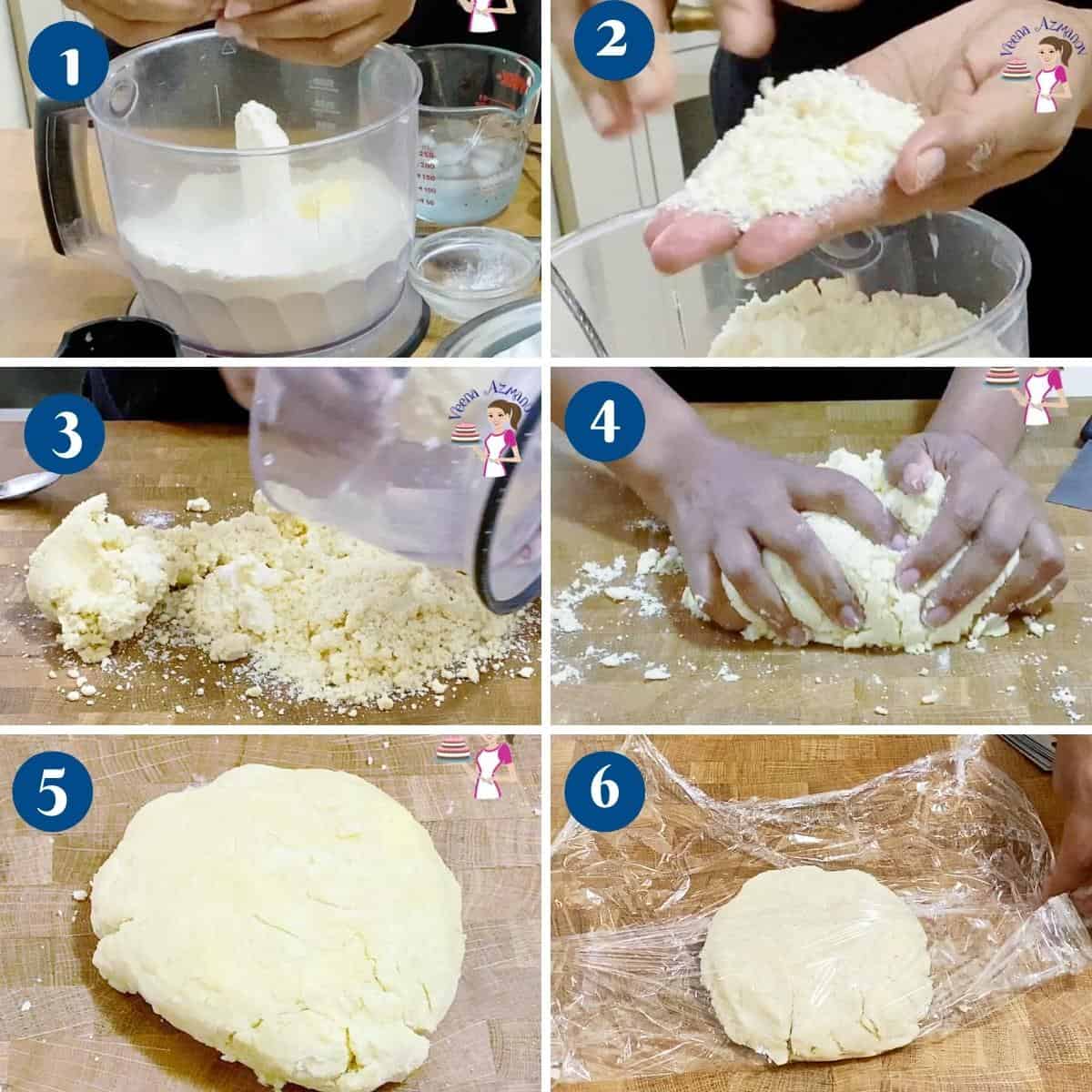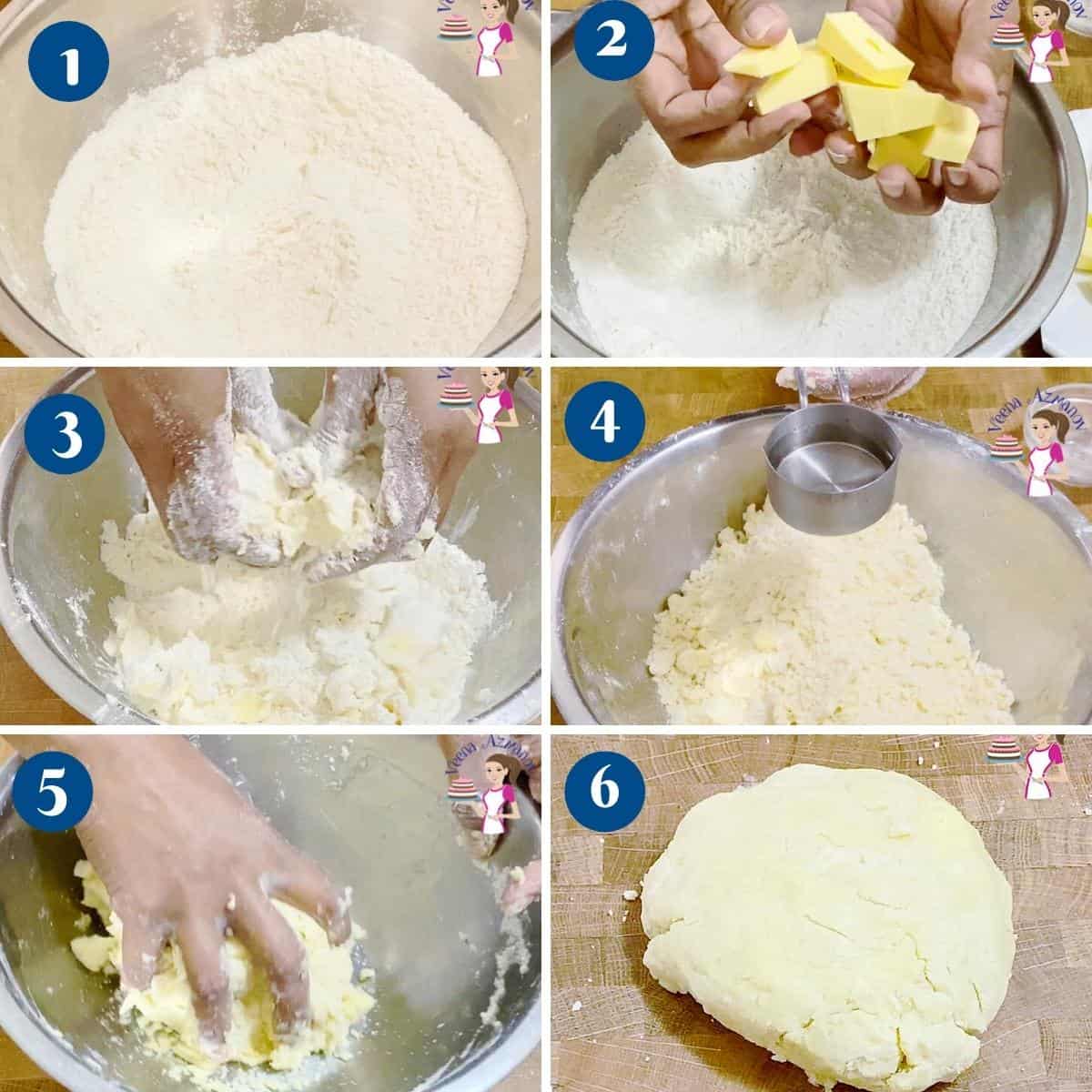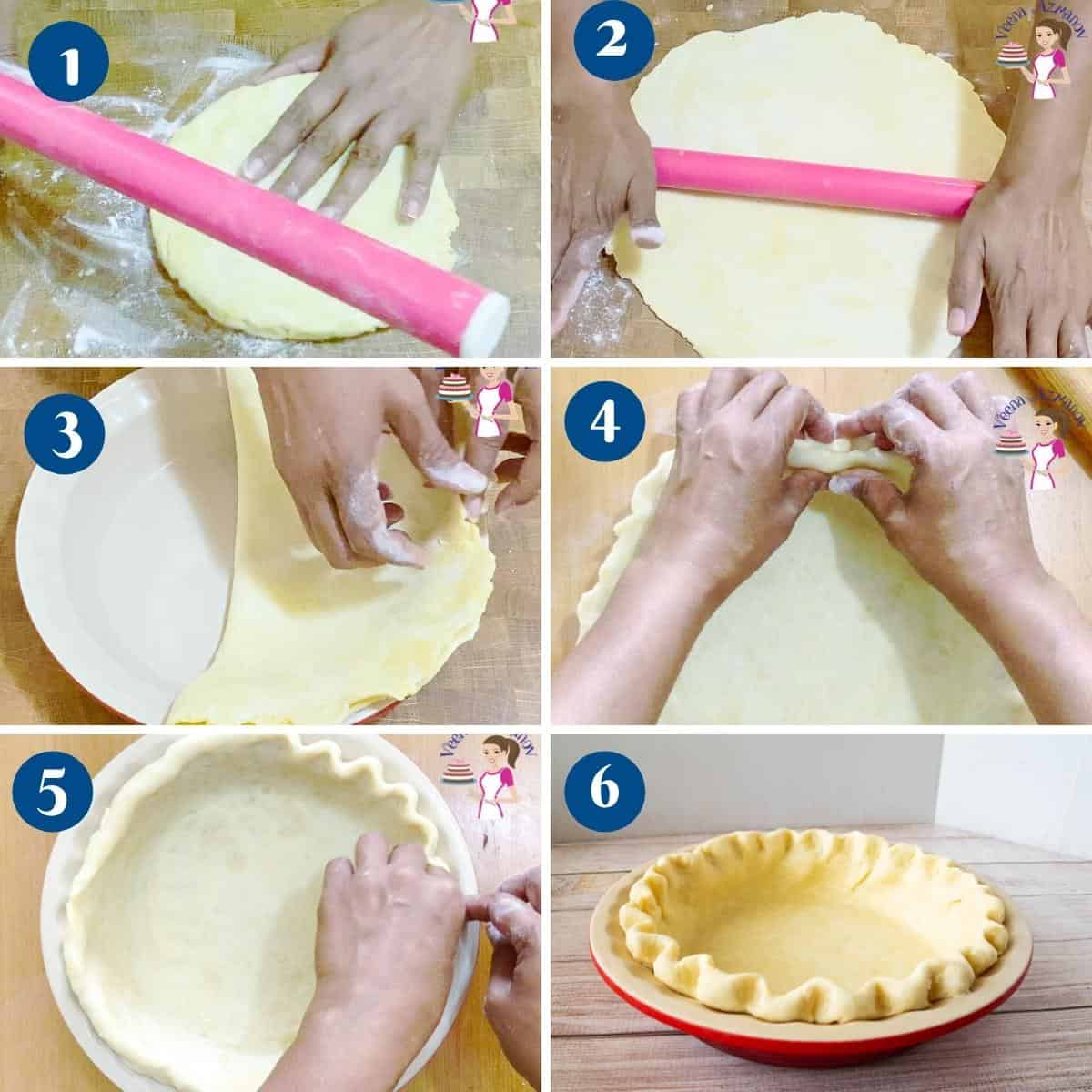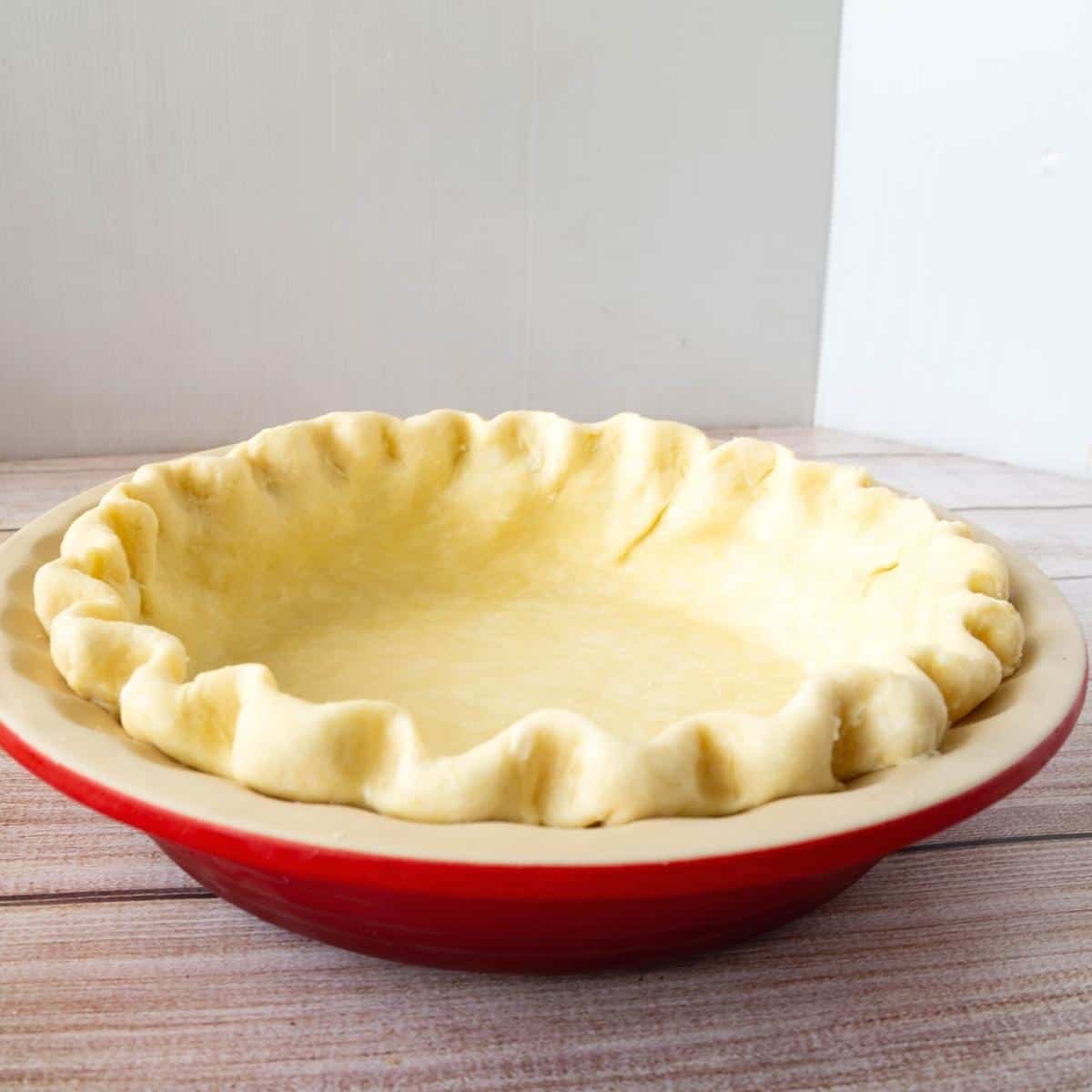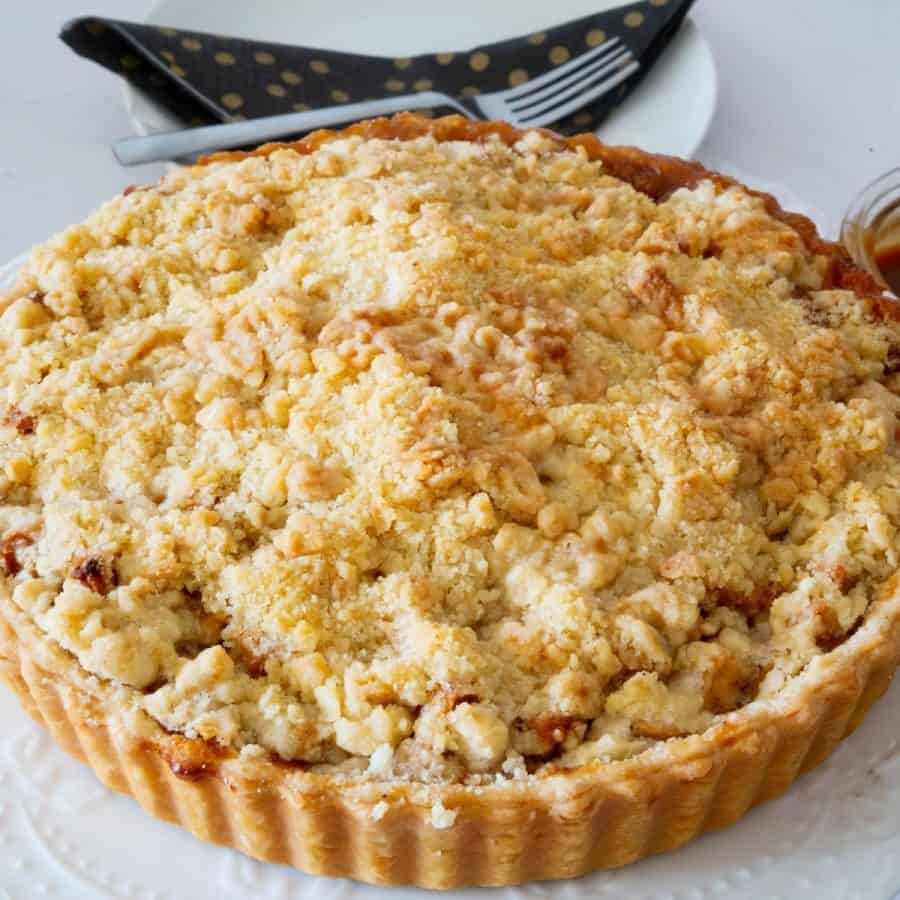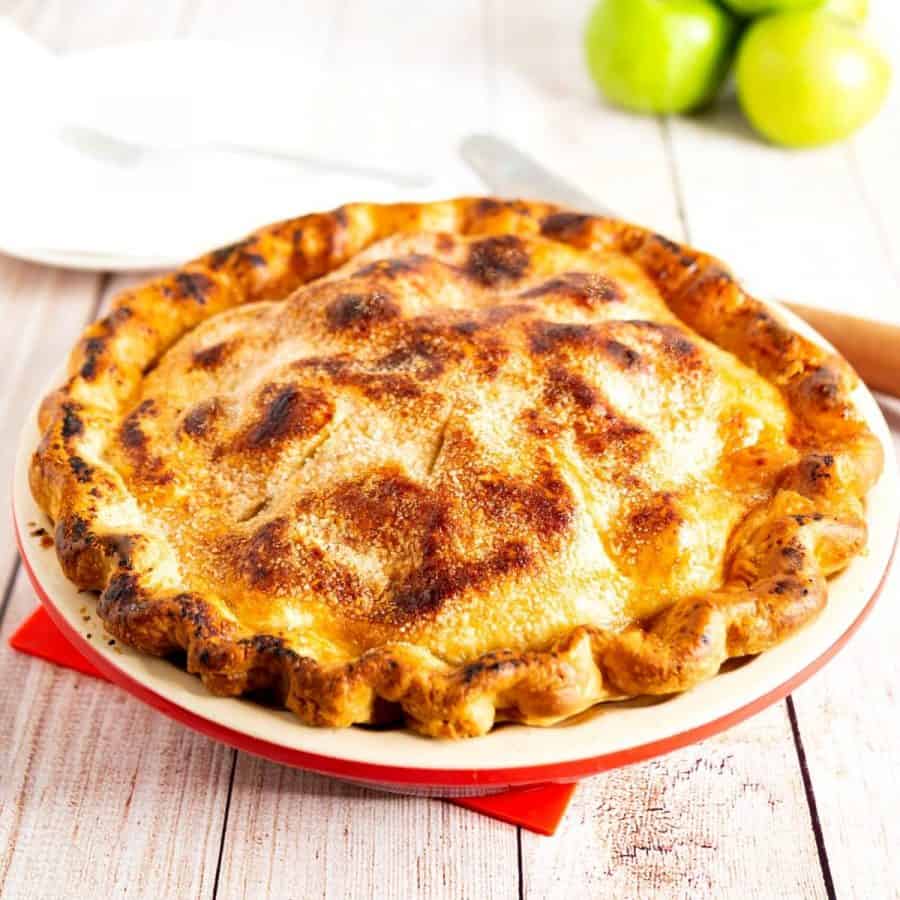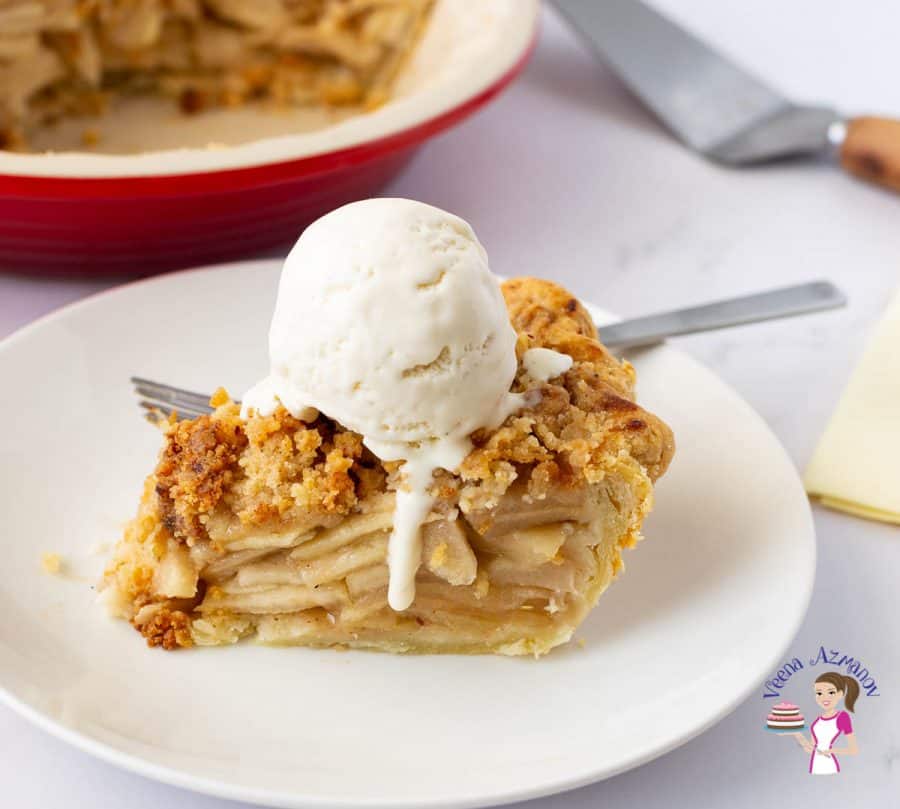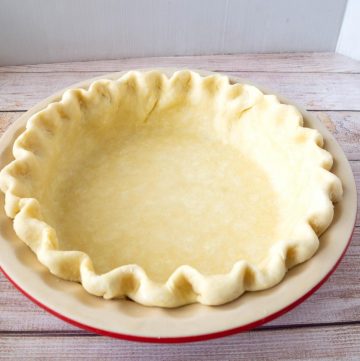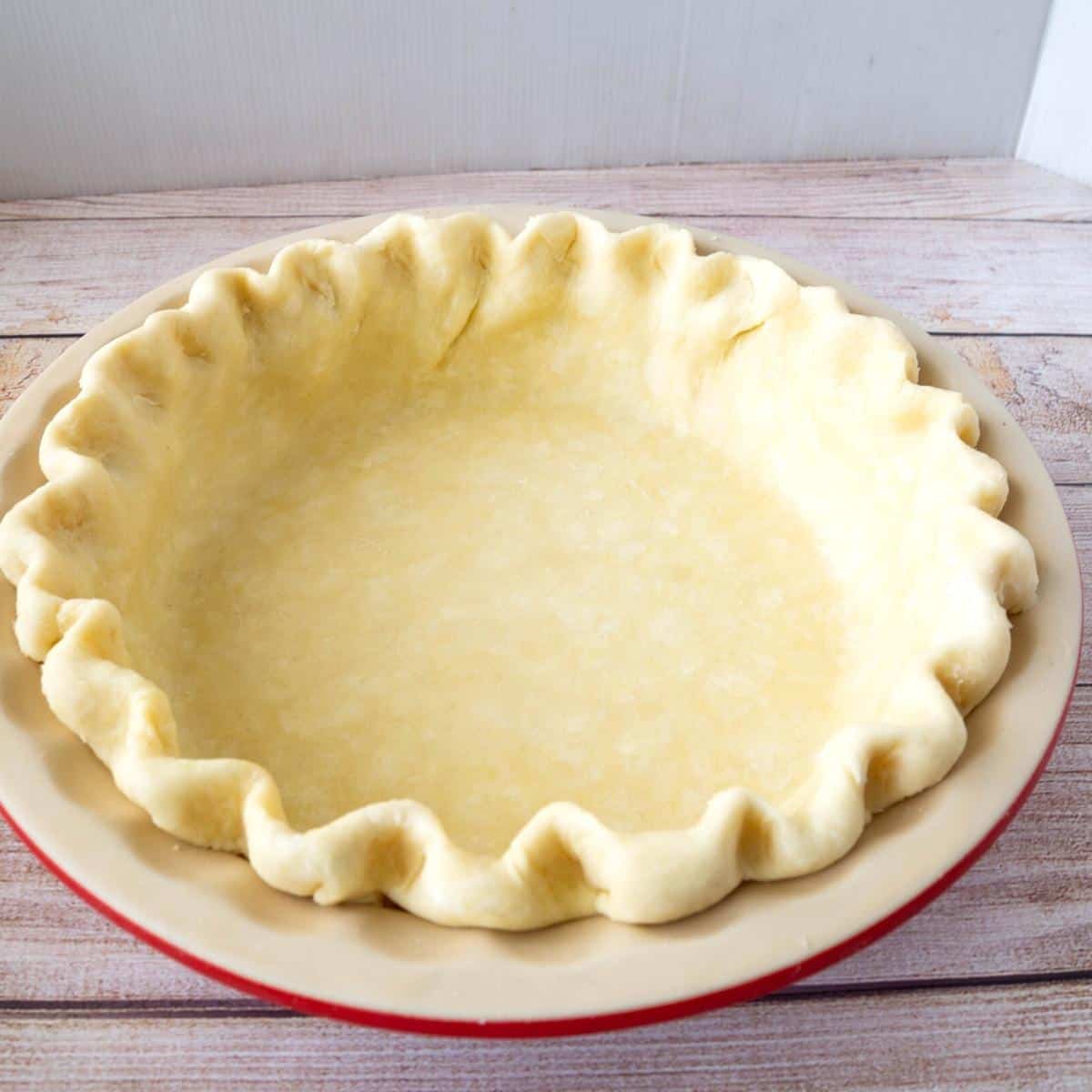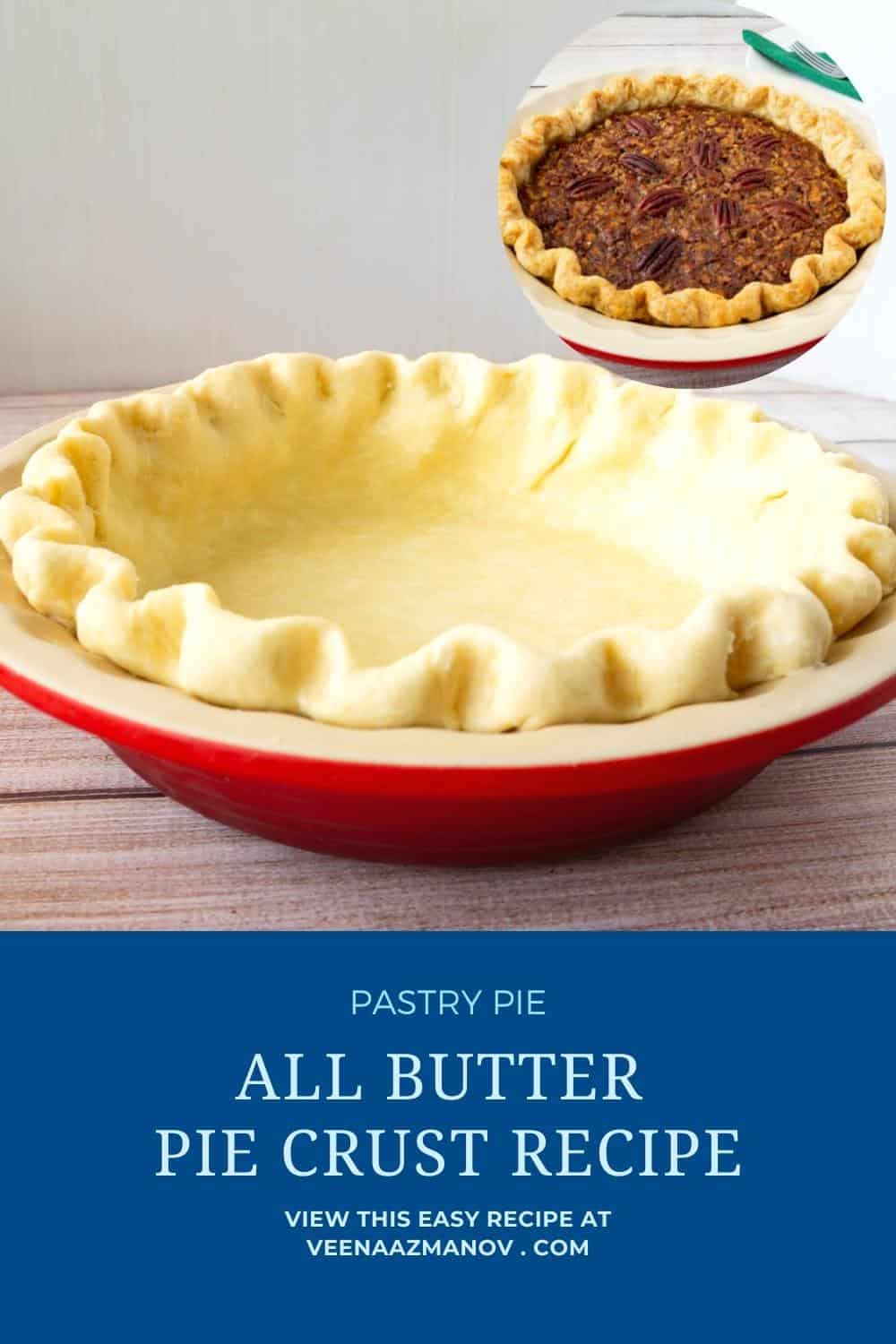Pie crust sounds intimidating, and yet it is really not difficult to make. We always have flour, butter, salt, and water at home. Don’t we? Yet, most people will take the trouble to go out and buy store-bought pie crust instead of just making it themselves. And, it’s often just because we perceive it as being difficult to make. A small word of advice, try making it at least once and you will be pleasantly surprised how easy and doable this is.
Why make homemade pie crust?
Homemade pie curst really takes only 5 minutes in a food processor or 10 minutes by hand. The best part is, you can make it ahead of time and keep it in the fridge for 3 days or in the freezer for up to 3 months. And you can use this crust to make both sweet and savory pies like pecan pie or mushroom quiche. Also, you need only 4 ingredients and they are all pantry staples so you can make this any time you want. You don’t need any special skills to make pie crust. This is one recipe where you get rewarded for being imperfect. The less you work with the dough the more flaky it will be.
Ingredients and substitutes
Butter – I like using all butter for that superior butter flavor but you can also use half vegetable shortening. My mom used half high-fat vegetable shortening. Make sure to chill the shortening for at least an hour before you use it. Flour – Use a good unbleached all-purpose flour. Do not use self-rising or bread flour. We want a flaky pie crust that does not rise or become chewy. Salt – Don’t forget to add salt to your pie crust it does bring out the flavor. My mom would add a teaspoon of sugar in her pie crust too. We loved her pies and quiches. Water – You want chilled water from the fridge. You can add ice to your water to chill it. Do not add ice directly to the dough. Since it will make the dough soggy. Also, do not use milk as it will the milk solids will burn and give a very dark crust.
Step-by-step: Homemade Pie Crusts Recipe
Pie dough
Food processor – In a food processor, add the flour, salt, chilled cubed butter (and vegetable shortening). Pulse for 30 seconds until it resembles coarse bread crumb consistency.
Pastry blender – You can also do this in a bowl using a pastry blender or fork, (I prefer my fingertips) to cut the butter (and vegetable shortening) into the flour. It should look like a crumbly flour-butter mixture.
Add the chilled water, a little at a time, and combine for 30 seconds more.Pro tip – The mixture will still be crumbly but when squished with your fingers it will shape into a dough. So, don’t over mix or pulse too much. Pour the mixture onto a work surface. Bring all the crumbs together and shape it into a ball. Then, flatten into a disc. Wrap in plastic wrap and chill for 20 to 30 minutes or until firm enough to roll.Pro tip – If you flatten it into a larger disc, it will chill faster and you will have to wait for much less time.
Roll crust
Dust the work surface with flour. Open the larger disc for the bottom and roll carefully. Use your 9-inch pie pan as a guide to see how big you need it.Pro tip – If you find the crust is breaking around the edges too much, it means that it is too hard to roll. Leave it to rest on the counter for just 7 to 10 minutes. Then, roll again, press the broken edges together with your fingertips. To transfer the dough to the pan without breaking, fold the pastry in half, then into quarters. Then, place it on the pie pan and unfold.Pro tip – Alternatively, you can roll the dough onto your rolling pin and unroll it over the pie pan (folding in quarters is easier for newbies). Gently fit it to the pie pan especially in the bottom edges with light hands. Cut the excess from the edges leaving a 1/2 inch for crimpingPro tip – You need about an inch more than the edge of your pie pan so you can trim the excess dough. Fold the excess under so you have a pretty round edge. Crimp the edge by forming a V shape with your thumb and index finger. Chill the crust in the fridge for 15 minutes up to 48 hours. Dock the pastry with a ting of a fork to prevent it from puffing during baking. Pro tip – If you are leaving the dough for a long time make sure to wrap in plastic so it does not dry out.
How to blind bake or partially bake pie crust?
Preheat the oven at 400°F / 200°C / Gas Mark 5 Line the pie with parchment paper, then fill the center with pie weights or baking beans. Bake for 15 minutes – then remove the pie weights and parchment paper.Pro tip – Baking beans are any uncooked beans that can be used over and over again to blind bake pie and shortcrust pastry. Add the filling and continue baking until the filling is cooked.Pro tip – If the pie edges get too dark, tent the edges with foil or a pie shield.
How to fully bake pie crust?
Preheat the oven at 400°F / 200°C / Gas Mark 5 Line the pie with parchment paper, then fill the center with pie weights or baking beans. Bake for 15 minutes. Then, remove the pie weights and parchment paper and continue to bake until the center is cooked and lightly golden.Pro tip – If the pie edges get too dark, tent the edges with foil or a pie shield.
How to make the perfect crimp for your pie crust?
Tips for Success
The secret to making a perfect crust is not only in the recipe but in the method of making it.
Fat – you will see a big difference in the quality of your crust based on the fat you use. If you ask my mom, it can’t be all butter. It had to be mostly full-fat GHEE (Shortening) and some butter for flavor. The higher the ratio your fat is, the better the crust.My grandmother would use 100% lard (animal fat). For her, making a crust with butter is a No-No! And yet, she lived healthily until 89.I, on the other hand, never use lard for making my pie crust. I use butter or sometimes half butter and half veg shortening. I’d be lucky if I live to her age..! The amount of water in your pie dough plays a very important role in the final texture. Too much water will make your crust very tough. And too little will make it very crumbly. Crumbly is good, and yet you still want to be able to hold a slice of pie. Avoid the fat/butter from melting into your flour. I usually place my bowl with the flour and chilled butter into the fridge for at least half an hour before I start to work it into the dough. Those of you living in a hot and humid climate can avoid touching the dough too much with your hands by rolling the pastry between two parchment papers. Also, use chilled iced water to maintain the temperature of the dough. Cool the pie crust for at least half-hour before you bake. This will prevent the sides from shrinking. Let the pre-baked crust cool for 15 minutes before you add in the filling. This will prevent the liquid from being absorbed into the crust. And if your filling is very liquidy, brush the pastry with egg white, before adding the filling. This creates a seal between the filling and crust. The secret to the perfect crimp Use the edge of your pan to help support the crimp. Cut the excess pastry such that when you fold it sits on top of that edge. So, once you crimp it, stays on that edge all through baking. As a result, when baked you get a perfect crimp.
Troubleshooting
Pie dough is too soft – a dough must be chilled for the butter to solidify so it is easy to roll otherwise the soft butter makes a sticky dough which is not easy to roll. Pie dough is too hard – when chilled for long the butter in the dough will solidify making it difficult to roll. Let the dough rest for 7 to 10 minutes on the counter then try again. Soggy pie crust – Sometimes, when the pie filling is too liquidy it can soak into the bottom crust making it soggy. One way to avoid it is to brush the bottom pre-baked pie crust with egg whites. This essentially creates a seal between the crust and the filling.
Frequently asked questions
Creative ways to use pie crusts
Pie crust dough is a versatile and delicious pastry that can be used creatively beyond traditional pies. Remember, pie crust dough is incredibly versatile, and you can let your imagination run wild with different fillings and shapes to create unique and delightful treats for any occasion. Here are some creative ideas to make the most of pie crust dough:
Savory Hand Pies: Use pie crust dough to make individual savory hand pies filled with ingredients like chicken and vegetables, spinach and feta, or beef and cheese. They’re perfect for on-the-go snacks or appetizers. Sweet Hand Pies: Create small sweet hand pies filled with fruit preserves, chocolate, or Nutella. Sprinkle some powdered sugar on top for a delectable treat. Pie Crust Chips: Cut pie crust dough into small, bite-sized pieces, and bake until crispy to make pie crust chips. Serve them with sweet or savory dips. Pie Crust Quiche Cups: Press pie crust dough into muffin tins to create mini quiche cups. Fill them with various quiche fillings, such as spinach and cheese, bacon and onion, or tomato and basil. Pie Crust Empanadas: Prepare empanadas using pie crust dough and stuff them with various fillings, including meat, cheese, beans, or vegetables. Pie Crust Fruit Tart: Press the pie crust dough into a tart pan and bake it until golden. Fill the tart with pastry cream or whipped cream and top it with fresh seasonal fruits. Pie Crust Pinwheels: Roll pie crust dough with various fillings such as cinnamon, sugar, jam, pesto, and cheese. Slice it into pinwheels and bake for a delightful snack. Pie Crust Pizzas: Use pie crust dough as a base for mini pizzas. Before baking, top it with tomato sauce, cheese, and your favorite pizza toppings. Pie Crust Cheese Straws: Sprinkle pie crust dough with cheese and spices, cut it into thin strips, and twist them before baking to make savory cheese straws. Pie Crust Samosas: Make samosas using pie crust dough and stuff them with spiced potatoes, peas, and other vegetables. Pie Crust Galette: Create a rustic and free-form galette using pie crust dough and your choice of sweet or savory fillings, such as fruits, vegetables, or cheeses. Pie Crust Pockets: Cut pie crust dough into squares or circles, fill them with sweet or savory fillings, and fold them into pocket shapes. Seal the edges and bake for tasty hand-held treats.
Did you LIKE this recipe? Save it for later. You can find my recipes on Pinterest. Follow me on Facebook, Twitter, and Instagram.Subscribe, and I’ll send you new recipes right to your inbox. Thank you for sharing - Save for later




